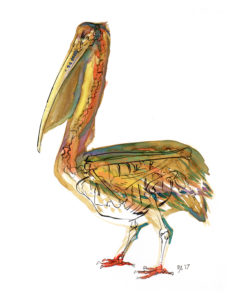Fall 2017
Where is LA Art?
Directors of the state’s arts councils respond
Published: October 13, 2017
Last Updated: December 21, 2018
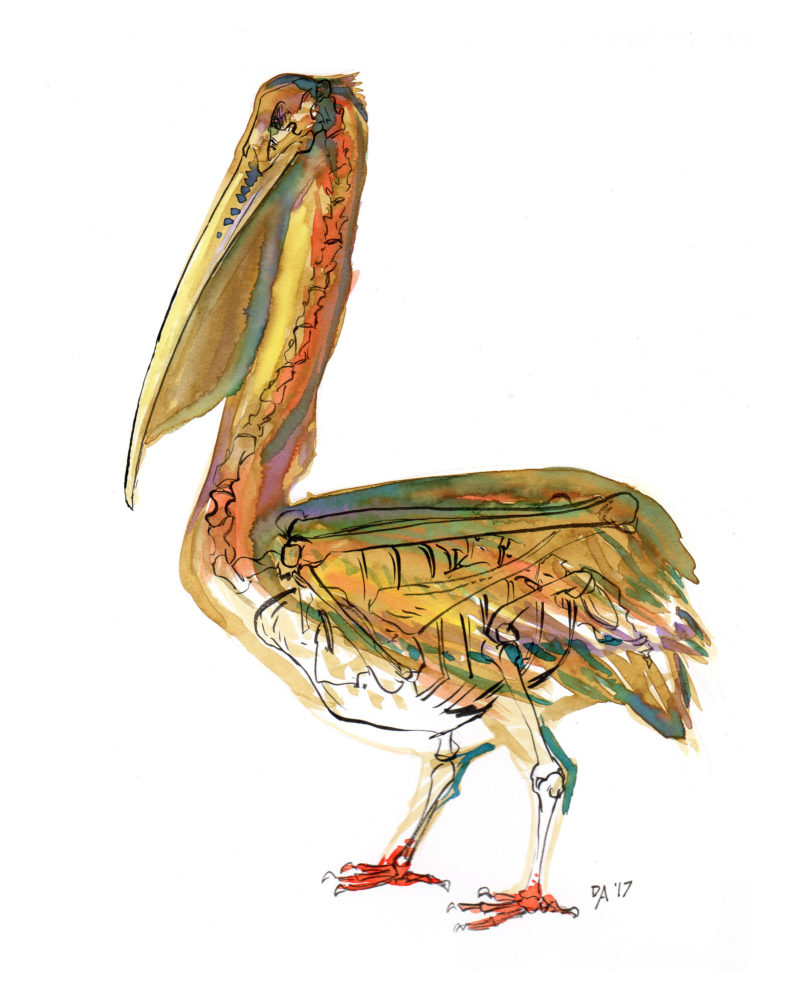
Courtesy of the artist, theinklinggirl.etsy.com
Brown Pelican Bones, by Danny Allain, 2017. Ink and watercolor on paper.
Regional arts councils provide lifelines of support for artists and audiences around the state. With the support of the Louisiana Division of the Arts, these organizations fund public art installations and festivals, connect artists to communities, and foster the appreciation of Louisiana’s artistic traditions.
“The regional arts councils serve as our partners in their local communities, providing outreach to individual artists and organizations along with cultural and community development,” says Cheryl Castille, Executive Director of the Louisiana Division of the Arts, an office in the Department of Culture, Recreation, and Tourism. “They serve as a communication liaison for us regarding state and local initiatives, and networking opportunities.”
We asked the executive directors of each of the state’s nine regional arts councils to weigh in on the state of art in Louisiana. Here’s what they had to say, along with a selection of works from artists in their regions.
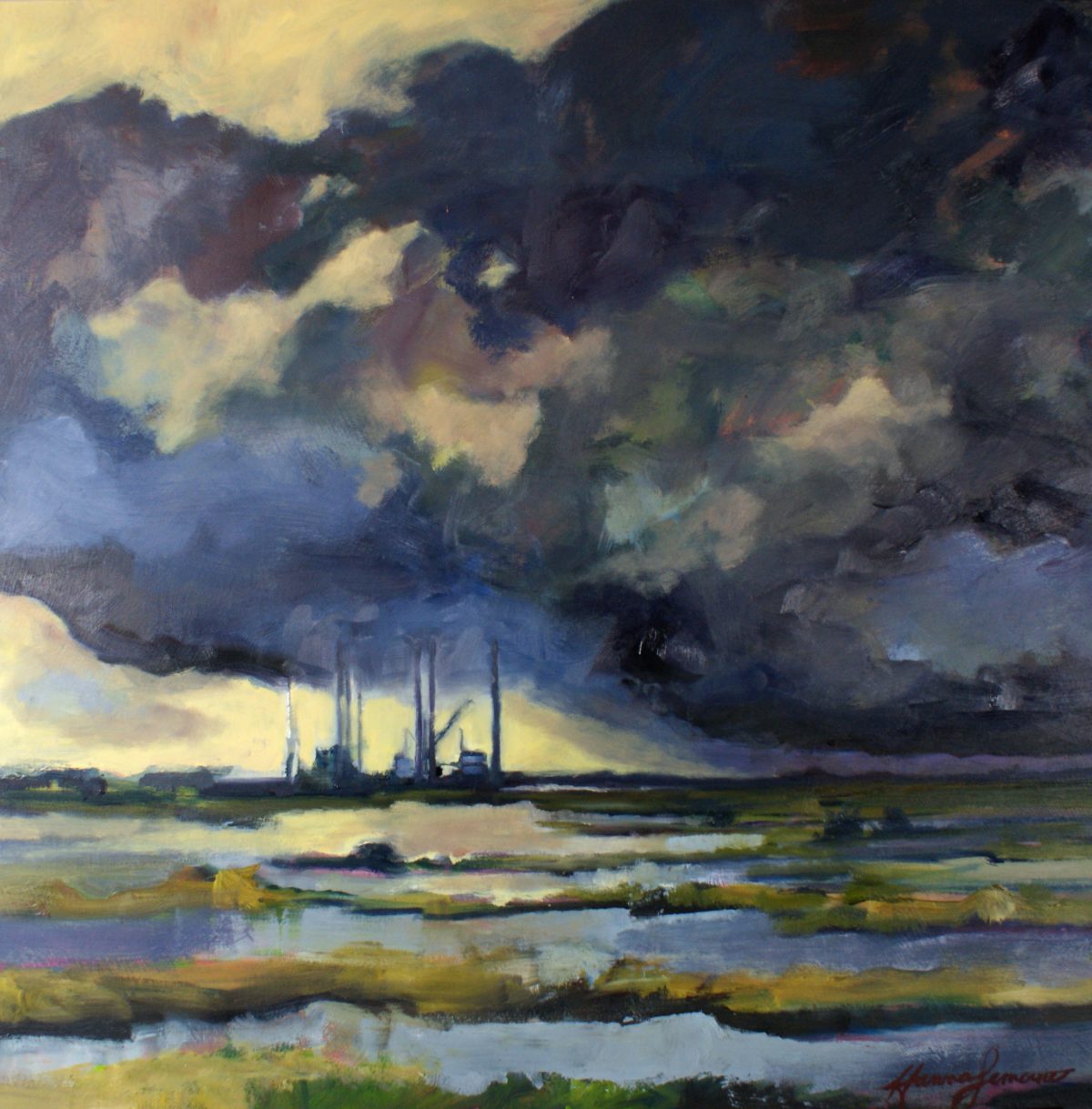
The Lift Boats, by Hanna Lemoine, 2016. Oil on canvas, courtesy of the artist, hannalemoine.com.
Nick Stillman
Arts Council New Orleans
Jefferson, Orleans, and Plaquemines Parishes
artsneworleans.org
The true joy of working in the arts in Louisiana is that art is being made almost everywhere, by almost everyone. The idea of creating things seems to come naturally to Louisianans, and it transcends class, race, age, and socioeconomic.
Public space is important here. The streets. Neutral grounds. Porches. Parade routes. Within our roles at the Arts Council New Orleans, one of our many priorities is to involve artists as actively as possible in the process of rethinking public space. For example, the Arts Council produces LUNA Fête each December, a four-night event in which we commission artists to produce large-scale artworks in public space made with light and technology. What if we also used local artists to collaborate with public offices and private businesses to produce light-based artworks that creatively—and literally functionally—shed light on some of the many areas of our city that lack adequate nighttime illumination?

Slipping Up, by Vanessa Centeno, 2016. Mixed media, courtesy of the artist, vanessarcenteno.com.
Similarly, a city needs basic infrastructure elements like trash cans, benches, and bike racks. Why order homogenous examples of these things from a catalogue when we could commission artists to create unique examples befitting a community as unique as New Orleans?
But even giving this room to strive, one of the pleasures of living in Louisiana is stumbling upon spontaneous, fascinating, and strange creativity in unexpected contexts. Like the House of Dance and Feathers. Like the unadvertised Germaine C. Wells Mardi Gras Museum upstairs of Arnaud’s restaurant. Part of what makes Louisiana great is that so much can reveal itself to anyone committed to keeping their eyes upon and digging below (and sometimes above) the surface.
Renee Chatelain
Arts Council of Greater Baton Rouge
Ascension, East Baton Rouge, East Feliciana, Iberville, Livingston, Pointe Coupee, St. Helena, Tangipahoa, Washington, West Baton Rouge, and West Feliciana Parishes
artsbr.org
In the Deep South, Louisiana is the most uniquely diverse, and its story, as told by its people through art, is found in every nook and corner, perhaps bringing a new meaning to objet trouvé. In Baton Rouge and the southeast region, visual artists are prolific. These artists, who find themselves living in a land of extremes, from hurricanes to floods to political unrest, create deeply emotive, contemporary work on a multitude of platforms and mediums, and they convey experiences in a soulful manner, with palpable affect for the viewer, in a way that embraces shared understandings of time and place.
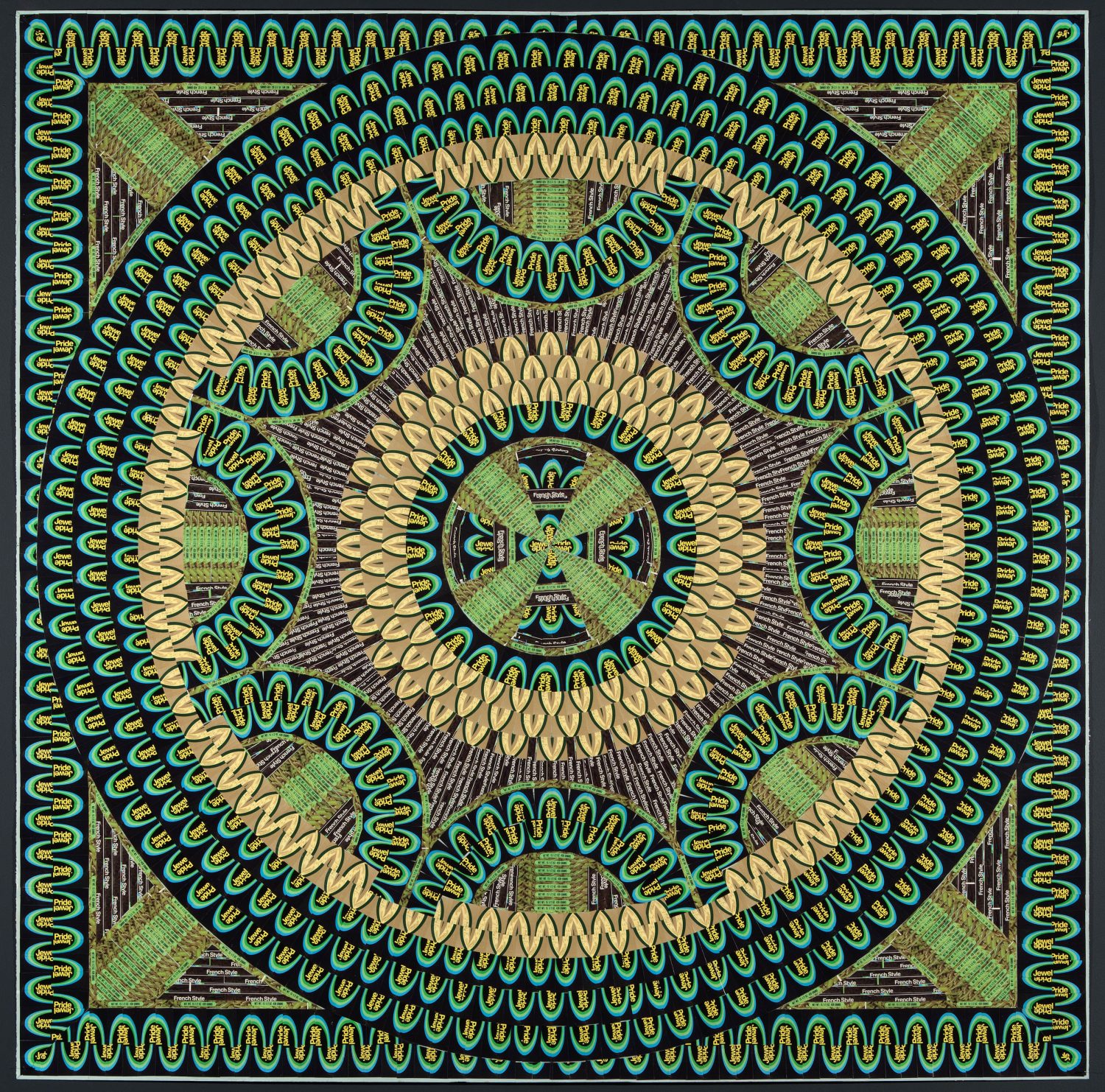
Jewel Pride, by Troy Dugas, 2012. Grean bean and beer labels on paper, courtesy of Arthur Roger Gallery and the artist, troydugas.com.
In the last few years, Baton Rouge has increasingly embraced the celebration of its creatives. From formal galleries, museums, and numerous design firms, to public sculpture, arts markets and festivals, wall murals and printmaking collectives, Baton Rouge is enthusiastically embracing art as never before. The Health Care Gallery, a unique concept where doctors see patients in a gallery featuring rotating, curated exhibits of contemporary artists in lieu of traditional sterile medical offices, embraces the vitalness of art with well-being; it is wildly popular. New plans to add affordable, creative spaces for working artists are in play throughout the city, and the new Ebb & Flow Festival celebrates this renaissance in the region, as well as the city’s unique place on the Mississippi River. The renewed interest in the city’s architectural assets, and a curiosity about modern process as well as preservation, could make Baton Rouge the new “found object.”
The flood of 2016 touched all of us in the region, and art studios with significant collections were lost to the rising waters. We are just beginning to see new work inspired by these events. Kate Trepagnier, Rosemary Goodell, Elizabeth Van Horne Wade-Day, Chad Schoonmaker, and Charles Barbier are among the artists who experienced significant loss and who will likely capture the deep and collective weight of that experience.
Erica Suarez
Bayou Regional Arts Council
Assumption, Lafourche, St. Charles, St. John, St. James, and Terrebonne Parishes
bayouarts.org
Here in South Louisiana, art is being made along the bayous, in the swamps and marshes, and amidst the fields of sugar cane, as it always has. The scenes of the South Louisiana landscape and its wildlife have long been the muse of artists in this region and continue to be an inescapable source of inspiration to the art of today. The sentiment of pride and the desire to preserve the culture that is felt throughout Louisiana is present in the artwork of our area.
That being said, South Louisiana art being made today often takes on a new interpretation of these traditional themes. There is still a desire to celebrate the magical moss-filled swamps and the familiar characters that live there, like the elegant egret, the eerie alligator, and the primitive crawfish, yet the artists find ways to make their art progressive and relevant. Be it a unique medium or becoming more abstract, the art being made today is not a recreation of the past. That pride and desire to preserve the culture can also allow for adaptation in order to remain relevant. As art reinterprets elements of our landscape and culture it helps us to process changes we are faced with as a community.
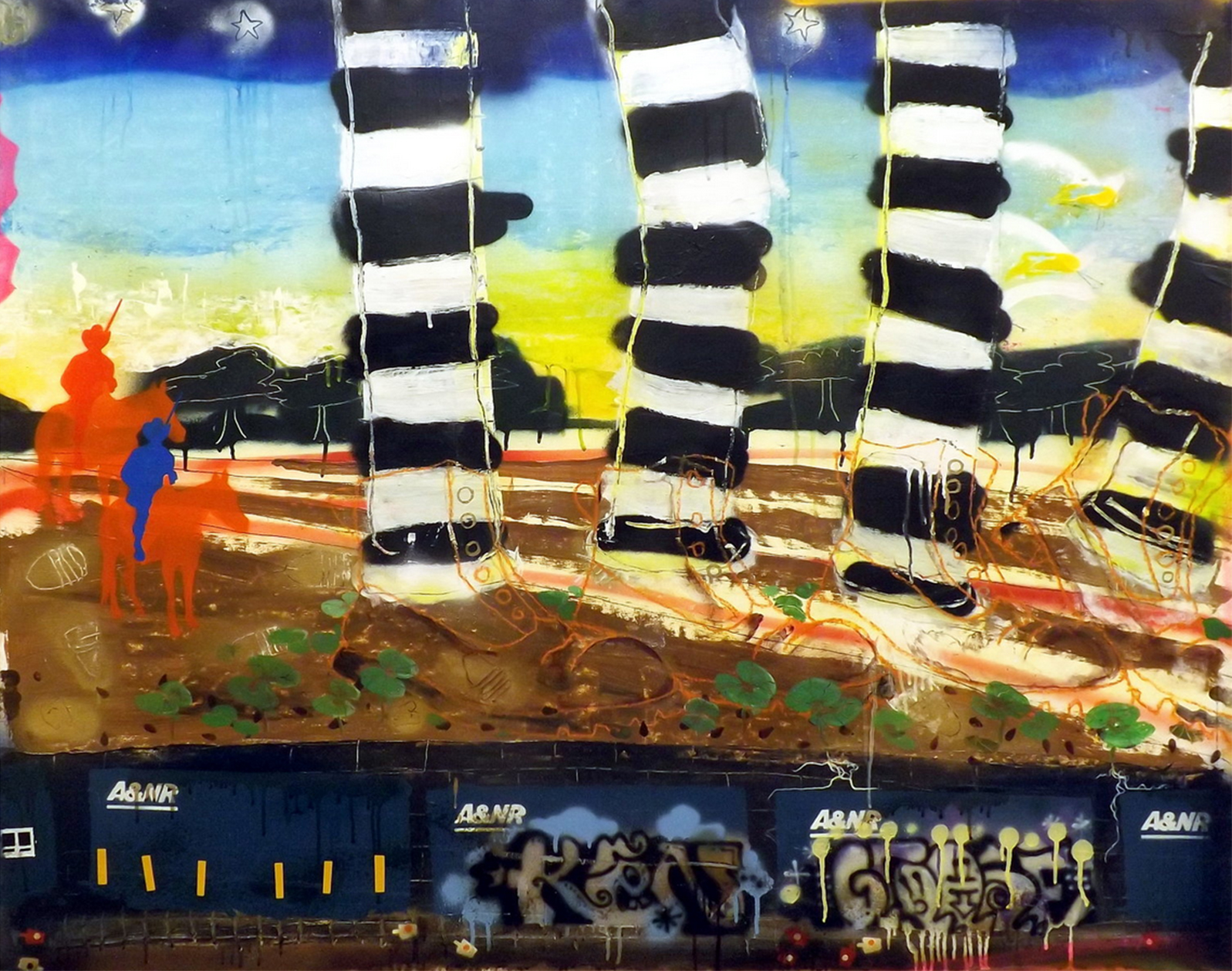
Underground Rail Road, Chain Gang, by Pat Phillips, 2016. Mixed media on canvas, courtesy of the artist, patphillipsart.com.
Gerd Wuestemann
Acadiana Center for the Arts
Acadia, Evangeline, Iberia, Lafayette, St. Landry, St. Martin, St. Mary, and Vermilion Parishes
acadianacenterforthearts.org
I wonder if places like ours are sometimes missing “the point.” We tend to undervalue our own artists, tend to buy art from elsewhere, and fail to invest sufficiently in building a cultural infrastructure that undoubtedly would bring great returns, both artistically and economically.
But there’s another issue that I find problematic: we tend to be too focused on a mono-culture, flaunting our Cajun or Creole heritage, promoting tourism around zydeco and crawfish and promising a French speaker at every corner.
Acadiana has grown into a different kind of place—a unique community where deeply rooted and genuine culture is reshaped by innovative artists with very urbane sensibilities. Many local artists are willing to take risks and make work that transcends clichés of quaint backwardness or blue dogs on every corner. While this new crop of local creatives is steeped in a deep sense of place, they are also shifting our community’s horizon.
This process is not always comfortable, but it is what keeps things from deteriorating into folklore. So here’s an ode to the artists of Acadiana—perhaps unsung, yet every bit as powerful as a great étouffée.
There are dream-like landscapes of imagination and fallibilities, expressed through whimsical fabric works by Stephanie Patton; there are complex and architectural collage pieces by Troy Dugas, mathematical in their precise use of old-stock labels. There are pencil works and animal images by Ralph Bourque—haunting in their dark and atmospheric swamp air.
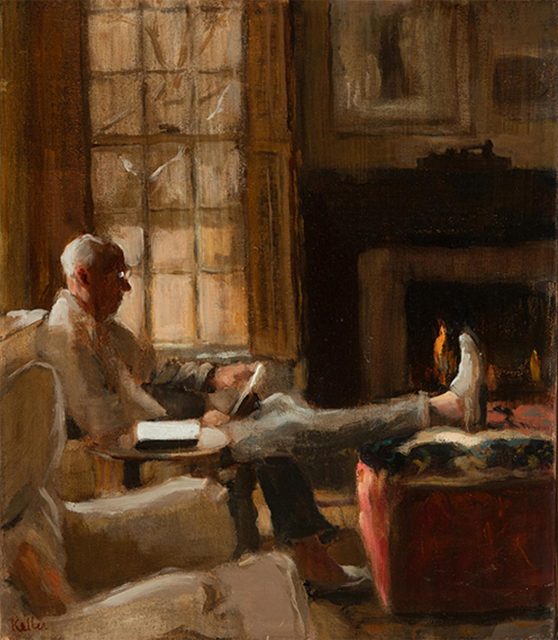
By the Fire, by Kathryn Keller. Oil on canvas, courtesy of the artist and private collector.
There’s the next generation of artists—the Jacob Broussards and Pat Phillips—who tackle uncomfortable themes of sexuality or race. And there are still our powerful stalwarts—Francis Pavy, John Hathorn, Tom Secrest, and many others—who continue to explore what it means to live and work in South Louisiana.
The visual arts in Acadiana have never been more alive, forward thinking, and diverse. I sincerely hope that we will embrace this other great cultural resource and give it some room on center stage.
Ashli Waldrep
Arts and Humanities Council of Southwest Louisiana
Allen, Beauregard, Calcasieu, Cameron, and Jefferson Davis Parishes
artscouncilswla.org
In Louisiana, art isn’t just found on the canvas; art bleeds into every fiber of life here, from the echoes of a street corner guitarist to the Southwest Louisiana cuisine crafted on your plate. In the heel of the boot, art exists in a synesthetic experience that will leave you dizzy for more. You can taste the brassy tangs of music in the air, you can smell the thick swamp air in photography and you can hear the eclectic sounds of our world-famous food dancing on the table.
Visitors from across the globe migrate to Louisiana to go on this multi-sensory excursion through our wetlands, downtowns, galleries, and music halls, but—most of all—they come to experience it through the people of Louisiana. Our art is nothing without the people here, and they are as varied and colorful as the art, music, cuisine, and culture they represent.
Matt Henry
Arts Council of Central Louisiana
Avoyelles, Catahoula, Concordia, Grant, LaSalle, Rapides, Vernon, and Winn Parishes
louisiana-arts.org
Louisiana art can be found in so many places—everywhere, really, depending on your point of view. Here in Central Louisiana, we are so very fortunate to have two hubs for the visual arts in particular: The Alexandria Museum of Art and River Oaks Square Arts Center. Together, they provide the community in the Alexandria/Pineville area with exhibits and works from within our region and beyond, as well providing studio spaces for more than thirty-five artists in residence. Additionally, in the center of Alexandria’s Cultural District, you will find JB Studios and The Loft, two businesses striving to help revitalize our downtown. Venture just up Jackson Street into our garden district, and you will find Tony Forrest Fine Art. And the list goes on. But our community has even more to offer. Come to one of our biannual art walks, and you will witness the abundance of creative talent that exists throughout our region and state.
And this is just speaking for our community here in the Alexandria/Pineville area. Venture to almost any small town or “big city” in Louisiana, and you will witness the same sumptuous array of artistry in so many forms. Louisiana is truly unique in its ability to celebrate its culture. One of my favorite local examples of the transformative power of art is in a random work of art improvised onto a piece of plywood facing the closed windows of the former Weiss & Goldring building. Not only has this been used as a photo backdrop for what seems like half the Alexandria population, but it has also spurred additional works beautifying an eyesore of many years. Where is Louisiana art heading? The beautiful thing about art is that we do not know where it’s headed. But we know art will endure, as it truly is a representation of us as a society.
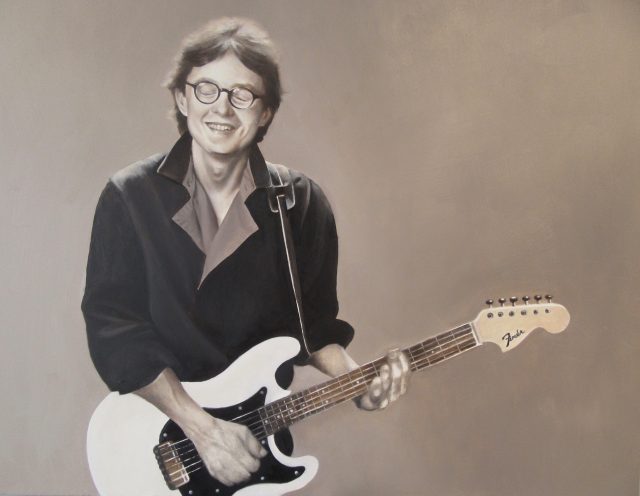
A Minor Seventh, by Talbot Hopkins Trudeau, 2017. Oil on cradled panel, courtesy of the artist, talbothopkins.com.
Pam Atchison
Shreveport Regional Arts Council
Bienville, Bossier, Caddo, Claiborne, DeSoto, Lincoln, Natchitoches, Red River, Sabine, and Webster Parishes
shrevearts.org
Louisiana art is being made in the hearts and minds of all Louisianans! Seriously, it takes the village of Louisianans to make the arts happen: Purchasing an original artwork, buying a ticket to a live performance, collecting several works from a favorite artist, donating to an arts organization, and/or writing a letter to a legislator to share the importance of public funding for the arts. This energetic community commitment empowers Louisiana artists to create, exhibit, and distribute their work with confidence.
This engagement by Louisianans makes vibrant public art throughout Louisiana possible: murals, sculptures, festivals, and art integrated into the design of public spaces and places. Plus, Louisiana has introduced and perfected deliciously beautiful culinary art; we foster a healthy respect for folk art, based upon our many cultural traditions; and we love our naive artists, finding ways to ensure that they shine alongside highly trained professionals.
In Northwest Louisiana, the arts are front and center of “creative placemaking”—a planning process that encourages artists to design and populate a nine-block downtown neighborhood called Shreveport Common. Through efforts that focus on artists’ entrepreneurism, 750 area artists are taking steps to earn their living from the production, promotion, and distribution of their art through a robust community partnership that has fostered temporary artist studios, a commitment by more than fifty community art collectors, open studio tour days, and the important published professional critical review that generates audience appreciation and artists’ confidence.
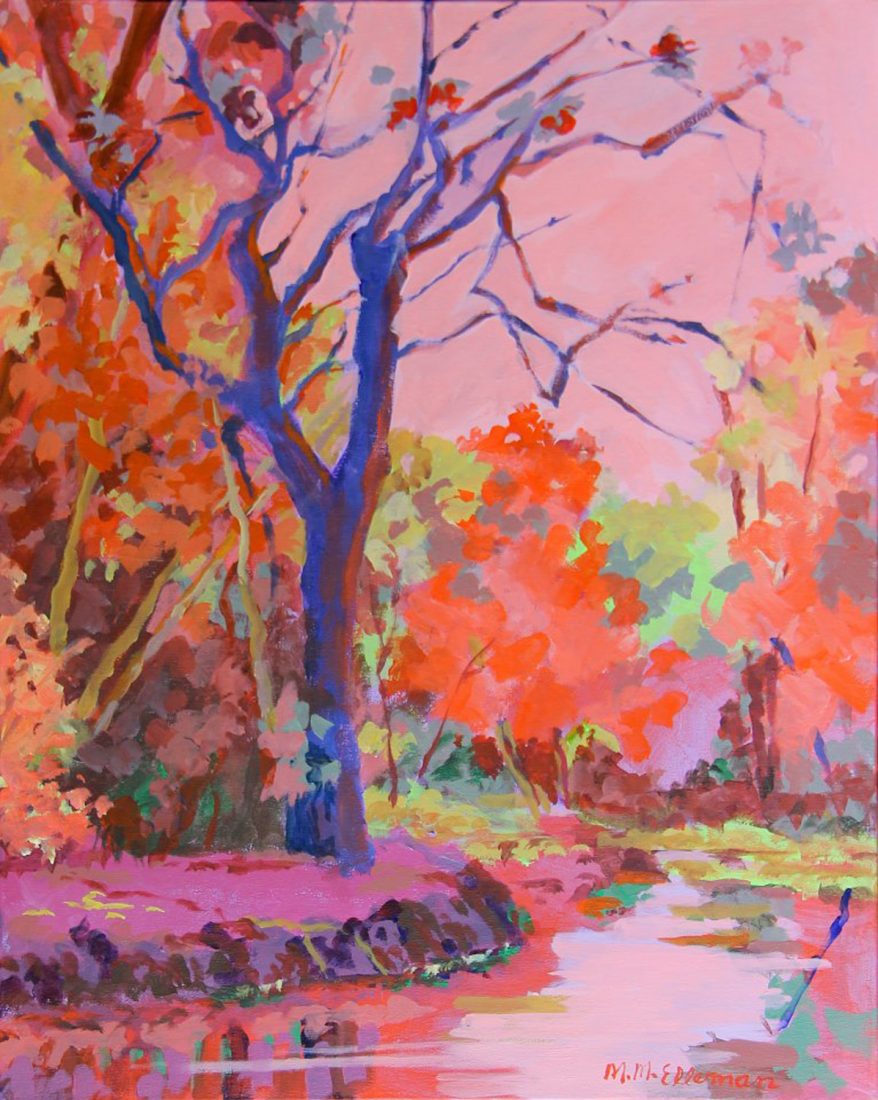
On the Bayou, by Margaret Ellerman, 2010. Acrylic on canvas, courtesy of the artist.
Barry Stevens
Northeast Louisiana Arts Council
Caldwell, East Carroll, Franklin, Jackson, Madison, Morehouse, Ouachita, Richland, Tensas, Union, and West Carroll Parishes
nelaarts.com
Art in Northeast Louisiana is enjoying a great renaissance. While support for the arts on the national level has encountered headwinds lately, art in Northeast Louisiana is growing and thriving. Despite all indicators that art is not worth pursuing, Northeast Louisiana has been producing and attracting artists whose work is talented, fresh, and rooted in a Louisiana identity.
The art in this region is moving towards accessibility and inclusivity. Artists are making a concentrated attempt to bring art to the non-artistic community through public works of art and open gallery events such as the Downtown Gallery Crawl in Monroe/West Monroe. Monroe is also the home of the New Music on the Bayou Festival, an event that brings in composers from all over the country and the world, giving them an opportunity to share their new original works with musicians and non-musicians in this region. The artistry of food is exhibited in many of the fine restaurants in Monroe/West Monroe, with award-winning chefs preparing meals that rival their contemporaries in larger cities. And dance from two ballet companies raise the level of their art to national heights.
Art is not just found in the more famous regions of the state. Louisiana artists create art wherever they are, and from our experience, they are everywhere. The art being created here embodies the identity of Northeast Louisiana and in turn it is creating a vibrant world for the residents of and visitors to this great region.
Jennifer Hart Bushnell
St. Tammany Arts Commission
St. Bernard and St. Tammany Parishes
stpgov.org
St. Tammany Parish is home to an incredible arts community. There is rarely a weekend that passes when you can’t find our visual artists, musicians, writers, and performers sharing their talents with our residents and visitors. St. Tammany’s vibrant arts community is central to the high quality of life that we enjoy in our parish.
Art is quite literally being created everywhere in St. Tammany. With our diverse landscape, artists have a wealth of inspiration right at their fingertips. From the rivers and bayous to the rolling hills and pinewood savannas, you will find artists using the landscape of our region as inspiration for their work. David Armand, a Folsom native, has used his hometown as the backdrop to many of his novels. He said recently that when he was younger, he thought people wanted to read about exciting places like New York or somewhere exotic. It wasn’t until later that he realized people want to know about your place, what is known and familiar to you, because that is sometimes just as exciting and exotic to them. Our area is rich with interesting landscapes and colorful characters that have provided inspiration for many.
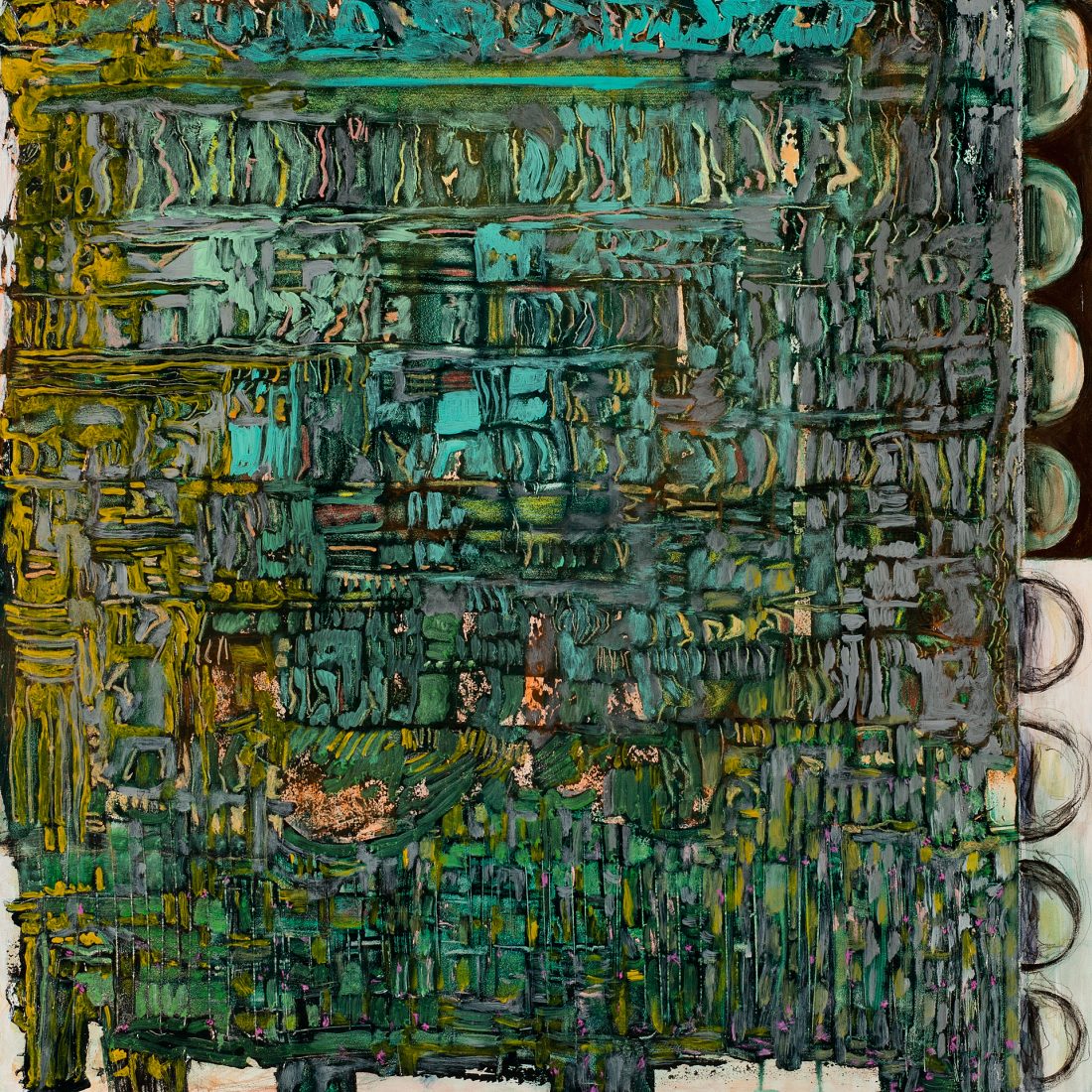
Variation 16, by Linda T. Dautreuil. Acrylic, wax pencil, graphite on cradled Masonite, courtesy of the artist, lindadautreuilart.com.
St. Tammany has a wealth of artists, like Gail Hood, Martin Needom, Linda Dautreuil, and Rolland Golden, whose works have all been inspired by landscapes, people, or stories of St. Tammany. From the St. Tammany Art Association galleries and art market in Covington to the Marketplace or Cultural Center in Slidell, you will find artists making and showcasing their work.
